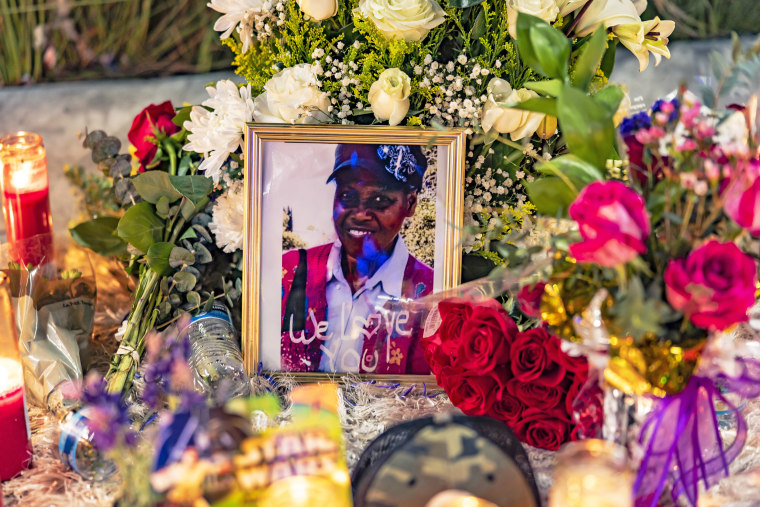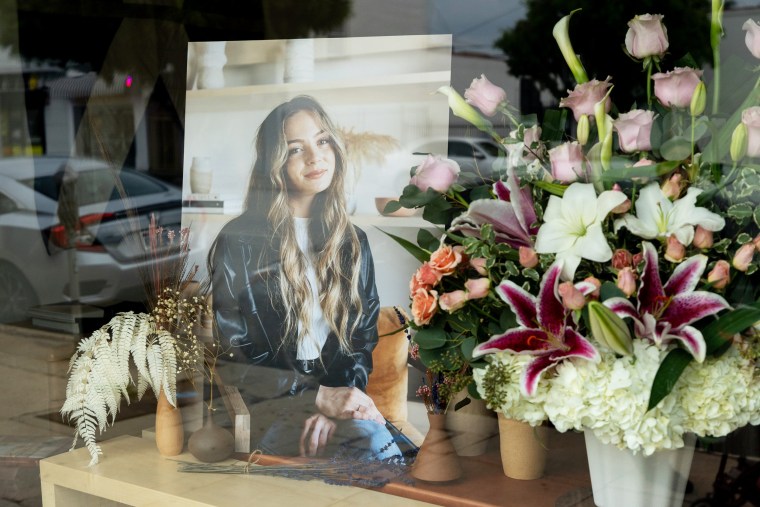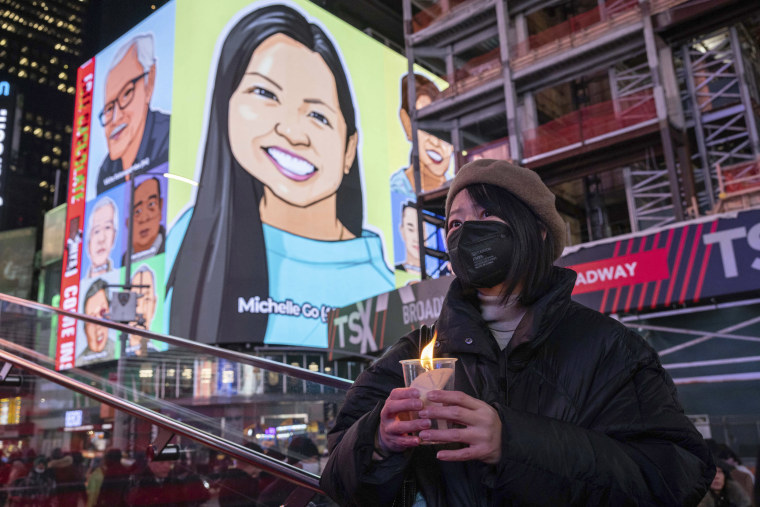LOS ANGELES (AP) — Three random killings — a woman pushed in front of a train, another punched at a bus stop and a third stabbed to death while working alone in a store, all allegedly committed by homeless men — have reignited anger, fear and frustration with the intractable issue of homelessness in New York and Los Angeles.
Advocates fear public outrage about the crimes has left a vulnerable population even more endangered.
Heidi Marston, executive director of the Los Angeles Homeless Services Authority, called the killings tragedies. But she said it’s important not to blame the entire homeless community for the violence or conflate the homelessness epidemic with the attacks.
“It’s not going to bring justice to the victims of these crimes,” she said.
Eric Tars, legal director for the National Homelessness Law Center, said labeling all homeless “as people we should be afraid of, rather than have compassion for, actually sets them up for hate crimes and vigilante violence and other mistreatment.”
Tars and other advocates and experts say a homeless person is much more likely to be a victim of violence, particularly a fatal attack, than they are to be a perpetrator. Data to back that up is spotty because often police departments don’t include in their reports whether a person is homeless. One reason may be that the FBI does not ask for housing status information when it compiles data from law enforcement agencies.
The Associated Press contacted police departments in LA and New York, as well as agencies in six other major cities with significant homeless populations: Chicago, Honolulu, San Francisco, Seattle, Portland, Oregon, and Washington, D.C., to see if they track the housing status of homicide victims and suspects. All except the Los Angeles Police Department either said they do not collect the data or required a formal records request to make it public or determine if it even exists.
In LA, the homeless population is estimated to be 40,000, or 1% of the city’s 4 million residents. Last year, homeless people were suspects in 43 of the city’s 397 homicides, nearly 11%. They were victims more than twice as often — 90 fatalities, nearly 23%. In 27 of the killings, homeless people were the victim and the alleged perpetrator.
In the last five years, the percentage of LA homicides in which a homeless person was the suspect has ranged from 6.5% to 12.9%, according to an AP analysis of LAPD data. Yet the frequency of cases where a homeless person was killed was 10% in 2017 and has risen every year since.
With rare exceptions, the murder of a homeless person receives scant attention, while the killings in which they are the alleged suspects often garner headlines.
“People’s deaths should be important,” said Donald H. Whitehead Jr., executive director of the National Coalition for the Homeless. “We should be mourning the loss of life, whether the person is in a suite in an executive building or if they’re in an encampment because they’re homeless.”
The National Coalition for the Homeless tracks violent hate crimes against homeless people using media reports and information from homeless advocates and service providers, an imperfect system that doesn’t capture all the incidents.
“We need to do a better job when it comes to compassion for homeless people,” Whitehead said. “According to the general public, who cares if someone died in an encampment?”
The random attacks in New York and Los Angeles generated national media attention and an outpouring for the victims. The first two occurred Jan. 13.
Sandra Shells, a 70-year-old nurse on her way to work was waiting at a downtown LA bus stop early in the morning when she was punched and fell to the ground, fracturing her skull. Across town, Brianna Kupfer, a 24-year-old University of California, Los Angeles, graduate student, was stabbed to death as she worked alone at a furniture store.

Two days later in New York, Michelle Go, a 40-year-old woman who worked at a consulting firm, was pushed in front of a subway at the Times Square station.
The sister of the man accused of killing Go told The New York Post he’d been diagnosed with schizophrenia and the condition worsened after their mother died more than two decades ago. A judge ordered the defendant, 61-year-old Martial Simon, to undergo a psychiatric evaluation.
Kerry Bell, 48, and Shawn Laval Smith, 31, are charged in the slayings of Shells and Kupfer, respectively. Both remain jailed ahead of their court appearances next month and have not yet entered pleas. It was not clear whether they had attorneys who could speak on their behalf.
“This is not only about bringing that person who committed this crime to justice, but at its core, making the community safer and ensuring that it never happens again,” Kupfer’s family said in a statement read aloud by a city councilman at a recent news conference. The statement did not mention that Smith, who had not yet been identified as the alleged perpetrator at the time, is unhoused.

Simon, Bell and Smith are listed as Black in online jail records. People who are Black or Indigenous are overrepresented in the homeless population compared to the country’s general population, according to a report by the U.S. Department of Housing and Urban Development.
People identifying as Black or African American make up 39% of all homeless people, yet they are 12% of the U.S. population. Indigenous people, including Native Americans and Pacific Islanders, are only 1% of the country’s population but they count as 5% of all unhoused people.
While authorities have not specifically blamed mental illness for any of the attacks, at least 20% of the country’s homeless population, including nearly a quarter of California’s unhoused residents and 17% of New York’s, has a severe mental illness, according to a January 2020 count of homeless people by HUD.
“The current mental health facilities in the city and county of LA are the streets,” said Kevin de León, a Los Angeles city councilman and mayoral candidate who is working to clear encampments in his district.
LAPD Chief Michel Moore said leaders need to focus on supportive housing rather than law enforcement: “These stats, these lives, are speaking to mental health, substance abuse (and) housing.”
Before Go’s killing, newly installed New York Mayor Eric Adams’ administration announced plans to increase police officers in the subway and reach out to homeless people to combat “actual crime” and the “perception of crime.”
It came after Adams rode the subway on his first day in office and later said, “I felt unsafe. I saw homeless everywhere. People were yelling on the trains. There was a feeling of disorder.”
In the United States, one of every four of the roughly 580,000 homeless people is in New York City or Los Angeles, according to the HUD count.
In California, 160,000 people remain homeless despite unprecedented spending in recent years to get people off the streets. Gov. Gavin Newsom has proposed another $2 billion on top of the record $12 billion in last year’s budget for homeless initiatives.
Newsom, a Democrat, also has promised legislation to make it easier to obtain mental health conservatorships that would force homeless and mentally ill people into treatment and housing.
During the pandemic, he also created programs that in the past year put 50,000 homeless people into temporary housing and some 8,000 into hotels converted into permanent housing.
Dr. Jonathan Sherin, LA County’s mental health director, said those efforts are Band-Aids for a problem that’s been growing for decades. The goal must be to get federal resources and build a community of dignified housing with easy access to treatment and providers, he said.
“Give people the opportunity to get off of the street and live in safe, secure, enriched environments,” Sherin said.
